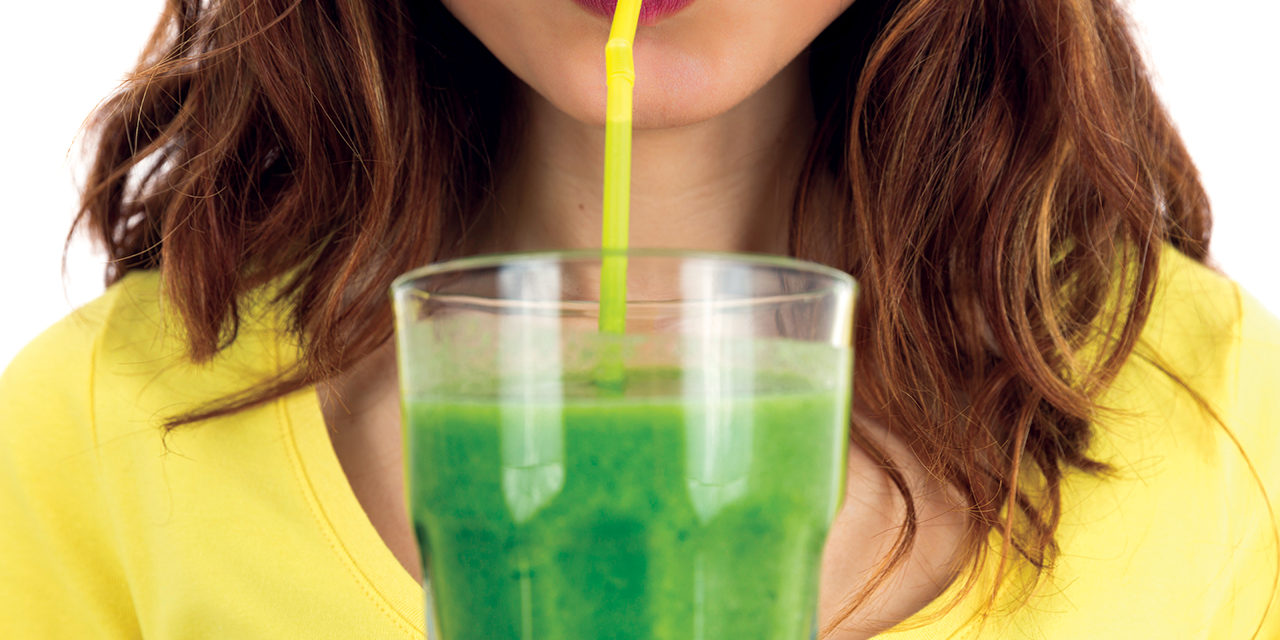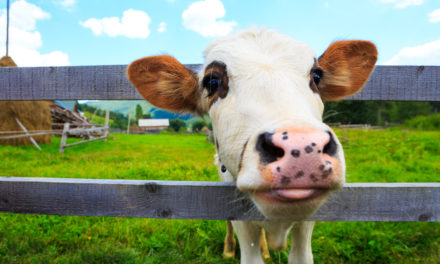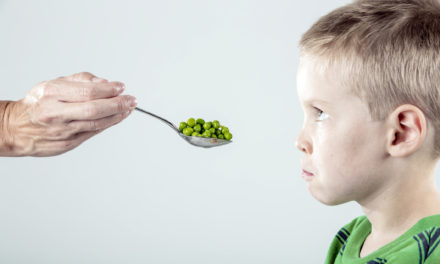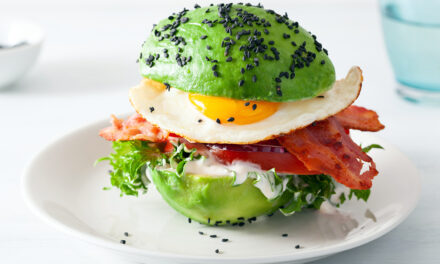It’s easy to look at a donut and see the fat and sugar that will end up as extra pounds around your waist. It’s all right there in the maple glaze and the rich, doughy breading—a combination that’s hard to resist. But while you’re busy fending off the donut with one hand, that café mocha in your other hand is sneaking just as much fat onto your frame. That’s because your body doesn’t register liquids the same way it does solids, and it processes them almost instantly—the 400 calories in the café mocha go right to your waistline without you even noticing. With so many unhealthy drink options available, it’s tough to know what the smartest choices really are. So Real Woman asked nutritionists to explain what makes so many popular drinks terrible for our bodies and offer healthy alternatives to juice, soda, sport, and energy drinks, high-calorie coffee confections, and smoothies.
Juice Drinks
A little juice isn’t bad, and a 6-ounce glass can even deliver some of the same nutritional benefits as fresh fruit. The problem is that most of us don’t just drink 6 ounces. “Because most juice drinks don’t have much fiber or protein—elements that make food satiating—they’re particularly easy to overdo,” says Janis Jibrin, a registered dietitian specializing in weight loss, eating disorders, and healthy eating. Satiety is the feeling of fullness after eating that suppresses the urge to eat more. It explains how, when it comes to our bodies, fruit and juice are not the same things. While they both contain plenty of vitamins, minerals, and antioxidants, fruit also has fiber, which takes the body longer to digest.
“The sugar in fruit juice starts getting absorbed right in your stomach,” says Jibrin. “So you basically take in the calories without noticing.” This is dangerous because of the high sugar content of most fruit juices—16 grams in a 6-ounce glass of orange juice, for example. “Without anything to break down, all this sugar goes right into your bloodstream,” says Caroline Lazur, a registered dietitian at the Metabolic & Weight Loss Center at Capital Health Medical Center–Hopewell. “Though your body may use some for energy, it’ll use the rest to produce insulin, which then gets stored as fat because your body doesn’t have any use for all that sugar at one time.”
And while there are health benefits to 100 percent fruit juice, which delivers some nutrients because it’s made from fresh fruit with no other additives, those disappear in juice drinks and fruit punches. These makeup for their small amounts of actual juice by adding sugar and other sweeteners, essentially making them artificially flavored sugar water. So be sure to check the nutrition label for the percentage of real juice before you put it in your body.
Better beverages: Switch to plain water or flavored sparkling water (no artificial sweeteners, no calories). Or, make your own flavored water by steeping lemons, cucumbers, berries, or other fruits in a pitcher of water.
Label Decoder
While it’s easy to talk about limiting sugars, fats, and artificial ingredients in our drinks, in practice it’s pretty hard to figure out what’s what in the fine print on the side of a bottle. Keep these tips in mind to make sure what you drink is good for you:
- The American Heart Association recommends limiting the amount of added sugar we consume each day to about 6 tsp (24 grams) for women and 9 tsp (36 grams) for men because sugar inflates calories while offering no nutrients.
- A good rule of thumb when ferreting out added sugar on a nutrition label is to look for the usual suspects like corn sweetener, fruit-juice concentrates, and syrup, as well as sugar molecules ending in “ose” (dextrose, fructose, glucose, lactose, maltose, sucrose).
- Limiting the amount of artificial sweeteners like Acesulfame K, Aspartame, Saccharin, and Sucralose in your drinks will curb the quantity of chemicals in your body and keep your taste buds honest.
- Milk fat is very saturated, which raises the level of cholesterol in your blood and may increase your risk of heart disease and stroke. So it’s best to go with nonfat or 1 percent milk.
- You can find a list of commonly used additives as well as safety ratings for each at the Center for Science in the Public Interest.
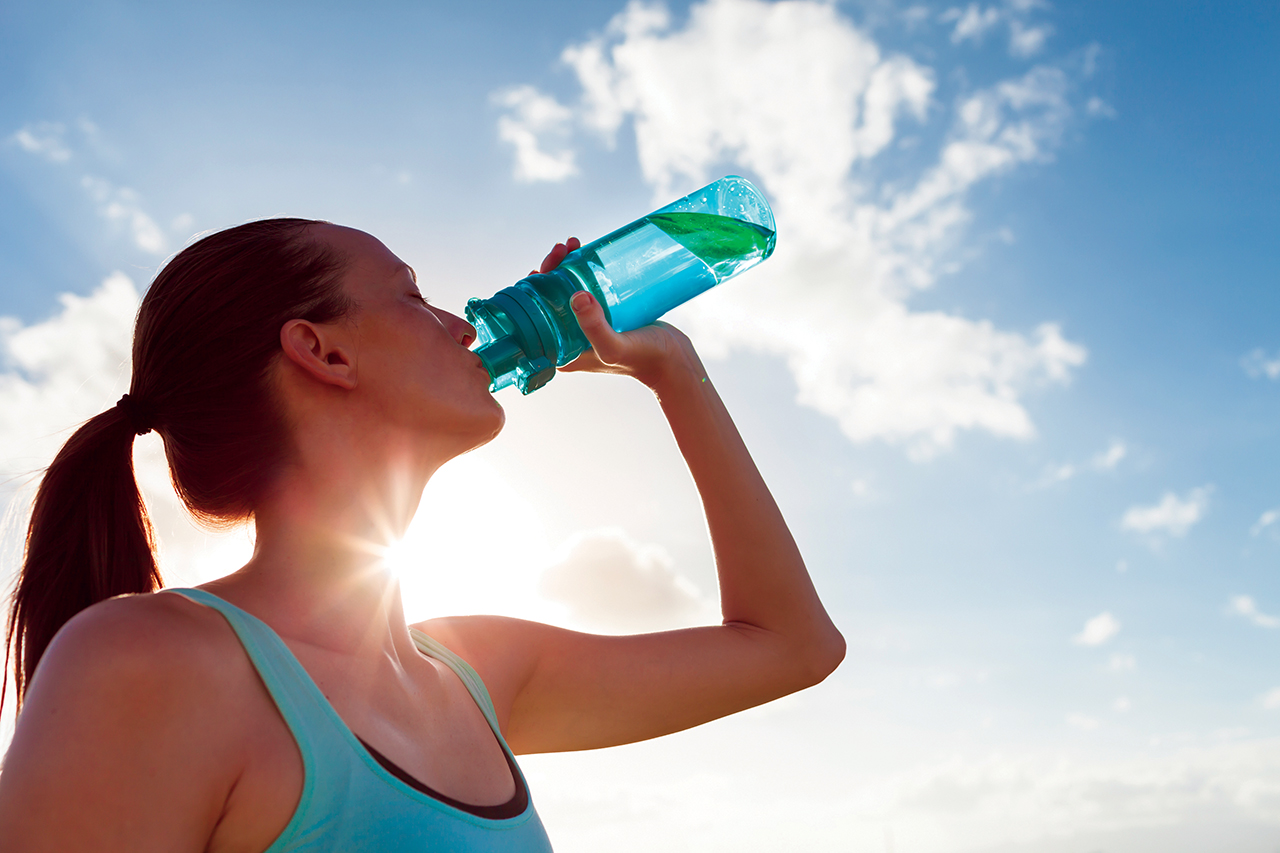
A Word About Kombucha
This tart soda promises to alleviate everything from digestive woes to joint pain. Although there haven’t been in-depth studies done on kombucha’s health benefits, the beverage, which is tea and sugar fermented with yeast and bacteria, contains healthy doses of probiotics known to supercharge the well-being of your digestive tract. The average 8-ounce bottle, for example, has approximately two billion probiotic organisms. Unfortunately, it also contains sugar—though not as much as regular soda. “I don’t know if there’s anything to kombucha’s claims,” says Jibrin. “But if the calories are lower than other drinks, then that’s a good thing.”
Soda, Sport, and Energy Drinks
There’s a reason cities like Philadelphia and Berkeley, Calif., are taxing sugar-sweetened beverages like they do cigarettes. Study after study has linked regular consumption of sugar-sweetened beverages like soda, sport, and energy drinks with an increased risk of obesity, type 2 diabetes, high blood pressure, and high cholesterol—all of which can impact your health and take years off your life. “These drinks have nothing satiating going for them,” says Jibrin. “They deliver anti-nutrition because, as all that sugar gets quickly transformed into fat, it tends to create triglycerides in your blood that contribute to clogged arteries and heart disease.”
For Lazur, cutting out soda and other sugar-sweetened beverages is a no-brainer when it comes to improving a patient’s health. “For anyone who’s concerned about their weight, take those out, and you’ll automatically see results,” she says.
When you consider the 39 grams of sugar in a 12-ounce can of Coke, switching to Diet Coke may seem like an obvious way to cut calories, but the research is mixed on whether this switch leads to weight loss. Some studies show a short-term benefit. Others find that diet-soda drinkers gain weight. Regardless of drinking diet soda, if you’re still taking in more calories than you burn, you will put on pounds. And don’t fool yourself into thinking that you can drink anything you want if you exercise. “Unless you exercise hard for more than an hour in the heat, your body doesn’t need the 35 grams of sugar in a 20-ounce bottle of Gatorade,” says Jibrin.
Better beverages: If you crave caffeine, iced tea can be a good alternative. Just choose wisely, since some bottled iced teas have just as much sugar and calories as soda. “If you make your own iced tea, it will contain a lot of cancer-preventing and heart-disease-fighting phytonutrients that are really good for you,” says Jibrin. “And if your soda habit is really bad, and you’re not able to dump the drinks, switch to artificially sweetened sodas, gradually weaning yourself off those, since the jury is out on their health effects.”
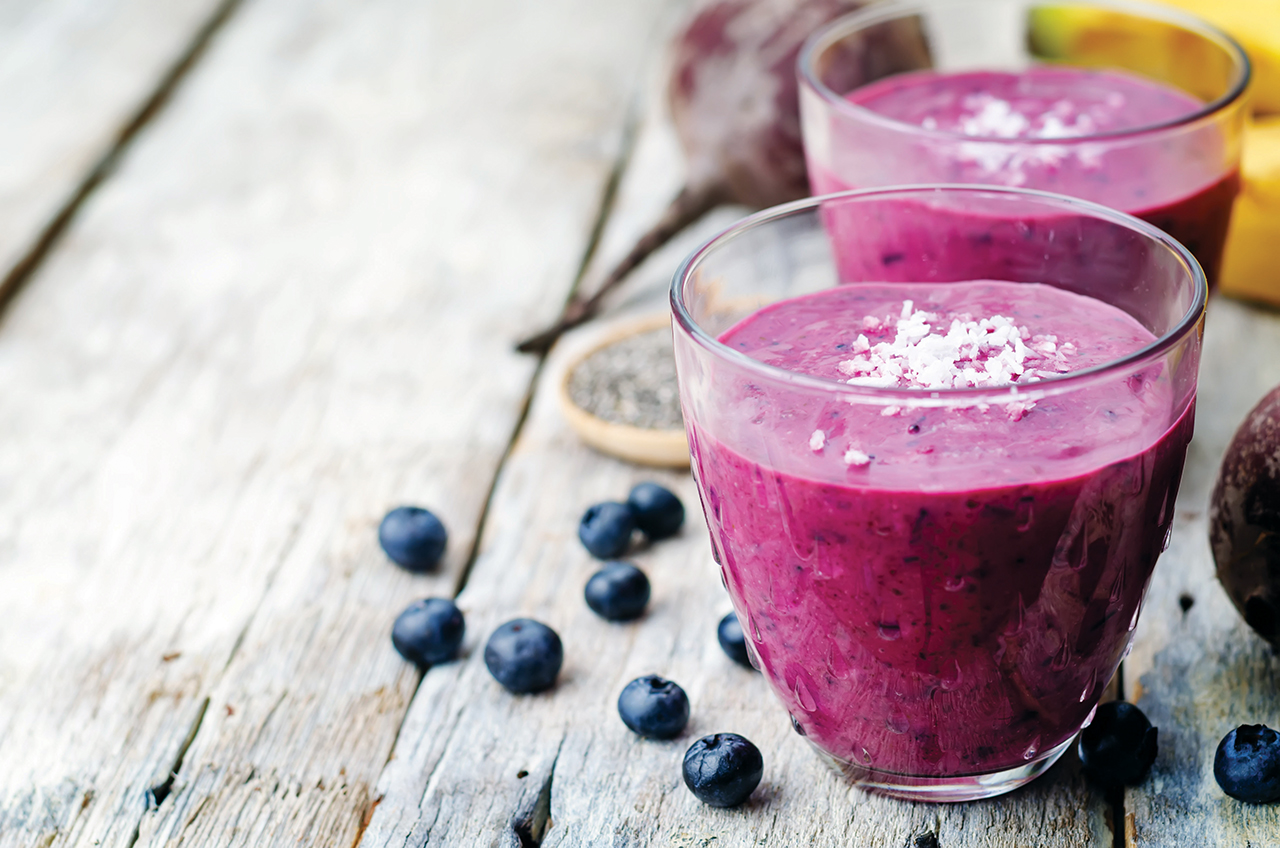
Smoothies
While smoothies are a great way to get your daily boost of essential vitamins and minerals, they can also be desserts in disguise thanks to sweeteners that boost the calorie count sky-high. The trick is to use sweet fruits like bananas and strawberries to avoid all the added sugar from ingredients like honey and agave. “As you slowly cut back on sugar, your taste buds will adapt as you retrain your tastes,” says Lazur. “It takes time, but after you’ve cut back for a while and then try something sugary, you’ll realize that it’s way too sweet.” To increase the satiety potential of your smoothie, add high-fiber fruits and vegetables like blueberries and kale to a kefir, skim, or almond-milk base. Then thicken it up with ground flax or chia seeds, which absorb water and create a paste-like consistency when added to liquid; and protein powder, which can thicken it even more—just be sure to use one that’s low in refined sugars and artificial additives.
Better beverages: If you want to drink your vegetables, you’re better off adding them to a smoothie than juicing them. By sipping the whole vegetable—fiber and all—you’ll reap the digestion-slowing benefits. In case you’re wondering, the golden ratio for smoothies is two cups of leafy greens to one cup of fruit.
High-calorie coffee drinks
Coffee benefits your health by providing a healthy dose of antioxidants and reducing the risk of type 2 diabetes. A study published last year by the American Heart Association found that people who drank a moderate amount of coffee (fewer than 5 cups of caffeinated or decaf per day) had a lower risk of death from heart and neurological diseases. However, when coffee drinks are enhanced with whole milk, cream, sugar, and syrup, the extra sugar calories and fat tend to nix the health benefits of the antioxidants.
Just look at a 16-ounce Java Chip Frappucino, which holds 460 calories and 66 grams of sugar under its mocha-drizzled peak. On the hot side of the Starbucks menu, check out the White Chocolate Mocha’s 470 calories and 59 grams of sugar, which is the equivalent of almost 15 teaspoons. Both drinks are made with 2 percent milk, which bumps up their protein content (6 grams and 14 grams, respectively), but that may be the only good thing about them. “Drinks like these are pretty irredeemable,” says Jibrin.
“A little bit of fat and protein helps delay the absorption of sugar, so drinks like these are more slowly released into our bloodstream than sodas and juices,” says Lazur. Allowing your body time to absorb sugar is fine when it isn’t dealing with massive amounts. Jibrin says that most people can get away with a single 150-calorie treat for the day: “When it comes to coffee drinks, that means something like a 12-ounce café latté with 2 percent milk.” She notes that switching to nonfat milk drops the latté to 100 calories, or what a standard dairy serving should be. There’s enough sugar occurring naturally in the milk that you might be able to get away without adding any more. “I like to add cinnamon and nutmeg instead of sugar when I want to give my drink extra flavor,” says Jibrin.
Better beverages: Switch to coffee or hot tea with either no sugar or, if you make it yourself, 1 tsp of sugar per 8 fluid ounces. Or, choose a 12-ounce latté made with nonfat or 1 percent milk (and no sugar) instead of a high-calorie coffee drink.

